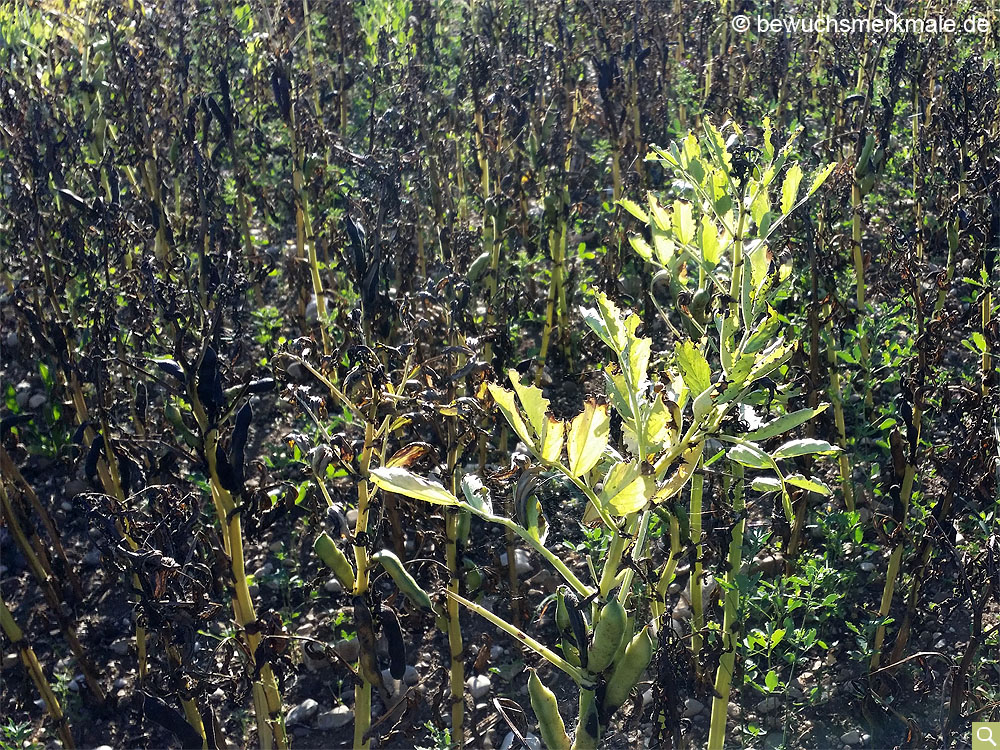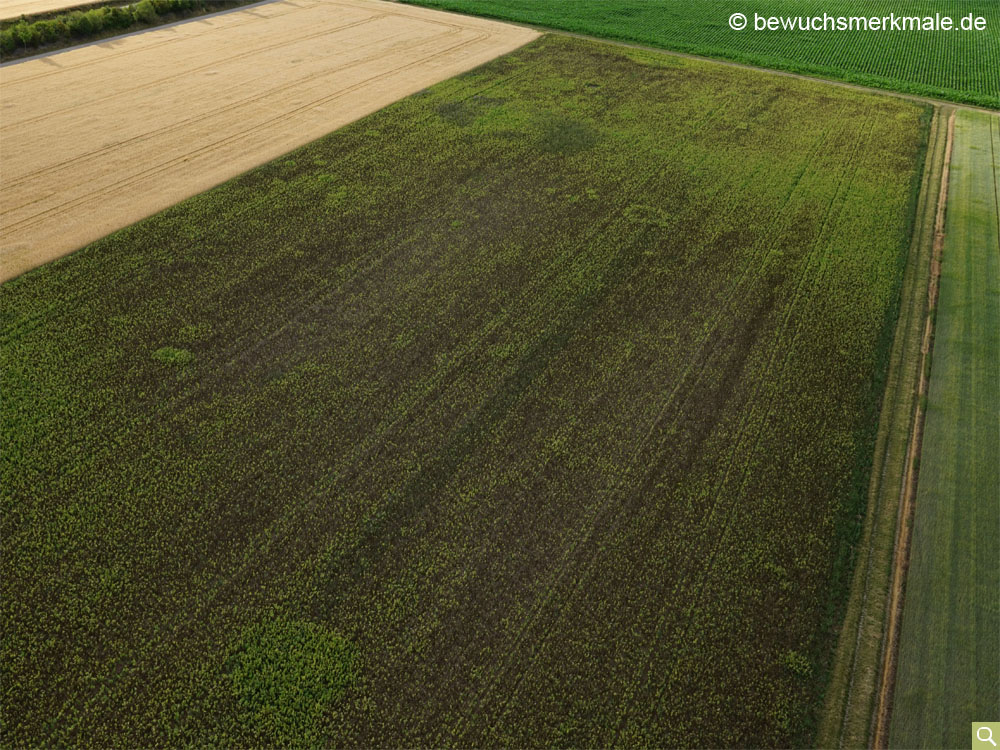Field bean (Vicia faba)
This legume, which is also known by other names, is mainly cultivated as animal feed (seeds, sprouts) because of its high protein and protein content. Only the seeds (fresh or dried) are suitable for human nutrition.

Properties
Field bean is frost-resistant down to -5°C and is therefore often sown as early as the end of February. The plant, which grows up to 1 m tall, has a high, uniform water requirement, which is why it is mainly cultivated on soils with a high water retention capacity or on soils with a high groundwater level. Like many legumes, the field bean also binds atmospheric nitrogen in the soil and therefore improves the soil.| Sowing: | from February |
| Row spacing: | 20 - 50 cm, more recently experimenting with shorter spacing |
| Root depth: | up to 1m deep taproot |
| Maturation: | June, harvest from mid-July onwards |
Formation of crop marks
Due to its high water requirement in dry periods, the field bean quickly shows different soil conditions in the form of differences in growth and maturation. These become particularly clear in the ripening phase, when well-supplied plants still have a green leaf colour, but plants on drier ground already change to brown-black colouring and the leaves become wilted.Examples

